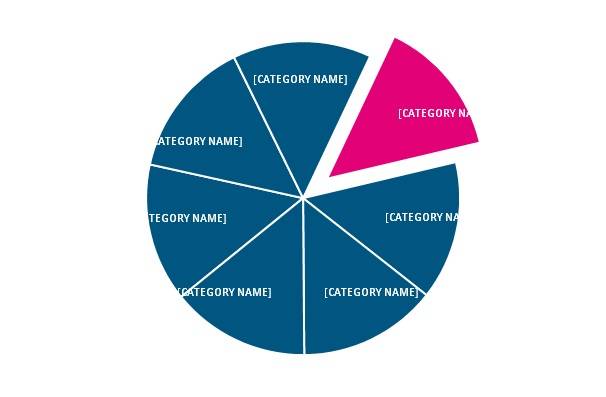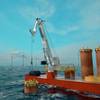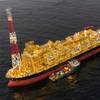Ferry operations are extremely complex with a combination of inputs that will all impact the ferry’s ability to deliver effective operational capability – the asset itself forms only a small part of a system for transporting people and vehicles between two points. All inputs to the ferry transportation system need to be considered to deliver the system’s capability and ensure the service is successful. Too much emphasis is often placed on the acquisition of a ferry, rather than on the remaining operational inputs, resulting in an ineffective, inefficient and unsuccessful operation. Only by robust management of all of the capability inputs can an operation be effectively maintained.
To develop a better understanding of the inputs to capability, lessons can be taken from organizations which operate complex systems, such as the defense forces. There are a range of available frameworks that define inputs to maritime system capability which may include the following elements: personnel, logistics, equipment, infrastructure, policies and procedures, organization and training.
Each of these elements forms part of a capability. The physical asset, in this case a ferry, is just one of the seven inputs that needs to be considered.
Although significant investment is made in equipment, when considering the through life costs of vessel ownership, the remaining capability elements, as shown in Figure 1, represent a large portion of the overall investment. As such, greater emphasis should be placed on this.
Beyond equipment, the operational coverage of capability elements includes issues relating to recruitment, retention, training and development of people; spares, administrative and training supplies; systems and infrastructure put in place to support an operation, such as transport; procedures and processes, security, command and responsibilities; those parts of the organizational structure which undertake critical tasks, other than operation and maintenance of the asset; buildings, docks, maintenance facilities, training facilities and wharves; and the maintenance of competency of the organization.
Throughout the lifecycle of a ferry, a comprehensive understanding of associated costs is crucial for business planning and reporting. For this reason, it’s important for stakeholders to duly consider the capability elements aforementioned at all stages of the ferry’s lifecycle. Taking the time to understand these elements at the beginning of a project will allow organizations to manage the costs effectively throughout. However, if there are major changes in capability this may trigger the need for a review.
A capability upgrade can not only trigger substantial, physical modifications to a ferry, it can mean additional, hidden costs related to the other capability elements, which in turn can become significant if not addressed and managed accordingly.
As an example, consider a ferry modification which has resulted in an additional five meters being added to its length to allow an extra 20 passengers to be transported. The costs associated with such a modification should not just centre on the physical asset itself – organizations must look at all of the capability elements and the impact of such a modification.
Considerations of associated cost issues could include crew numbers and ensuring competencies are sufficient in light of the upgrade; making sure adequate spares are available; other systems which may be affected by the upgrade (i.e. portable water capacity); whether sufficient wharf space is available; if there will be an increase in berthing fees; ensuring the maintenance facilities being used have capacity to deal with a larger vessel.
In addition to a capability upgrade, an assessment of capability elements is also critical when investigating the potential to extend the life of an asset. Although there may not be a change in the ferry’s capability, understanding the costs for a life extension period is important, given that any business case made at project inception has been made with an assumption of ferry life. If this assumption changes, it is then necessary to assess the capability elements to help validate whether or not there is a strong business case for life extension and identify the costs of doing so.
Life extension studies are best used as part of the decision making process when considering a vessel’s future, as it nears the end of its service life. Organizations will be looking at two options: to dispose of a vessel at its designated end of service date and replace with a new capability or, extend the life of the current vessel and delay the purchase of a new capability.
In most cases, this decision will simply be down to whether or not it is more cost effective to carry out a replacement project or invest resources into a heightened maintenance regime or major upgrade – it will not remove the need for eventual replacement. Regardless of the decision, consideration of all capability elements is crucial in developing an accurate picture of costs.
There are a range of similar approaches used by organizations around the world which could be considered suitable depending on the operation in question. Whether it is in consideration of capability upgrade, life extension or in gaining an initial understanding of the cost of ownership of a ferry, it is recommended that a holistic approach is taken to defining the operation, extending well beyond the acquisition of the asset.
BMT Design & Technology Pty Ltd (BMT) has recently completed a design project for the South Australian Government’s Department of Planning, Transport and Infrastructure (DPTI). Working in partnership with the DPTI, BMT has developed a replacement design for ferries that operate on the River Murray, the third longest navigable river in the world, after the Amazon and Nile.
The steel hull, built by local firm Bowhill Engineering, was fit out by the Departments Morgan dockyard. The first ferry has now gone into service in Lyrup with another three scheduled for completion by July 2016, 2017 and 2018 respectively. These ferries are heavily relied upon by the local communities for safe passage across the River Murray. BMT delivered a robust design, a critical factor for a service that operates 24 hours a day, 365 days a year.
The team at BMT provided structural engineering and naval architecture services to deliver a detailed design which aligned with the customer requirements. BMT also carried out condition surveys on a further four timber hulled ferries which were nearing end of life. Following the surveys, the Department applied weight restrictions to help maintain the longevity of these ferries for safe operation until they are replaced. Constructed of steel and 22m long, these cable driven ferries can take two lanes of cars or trucks of up to 50 metric tons, or a maximum of 70 passengers.















